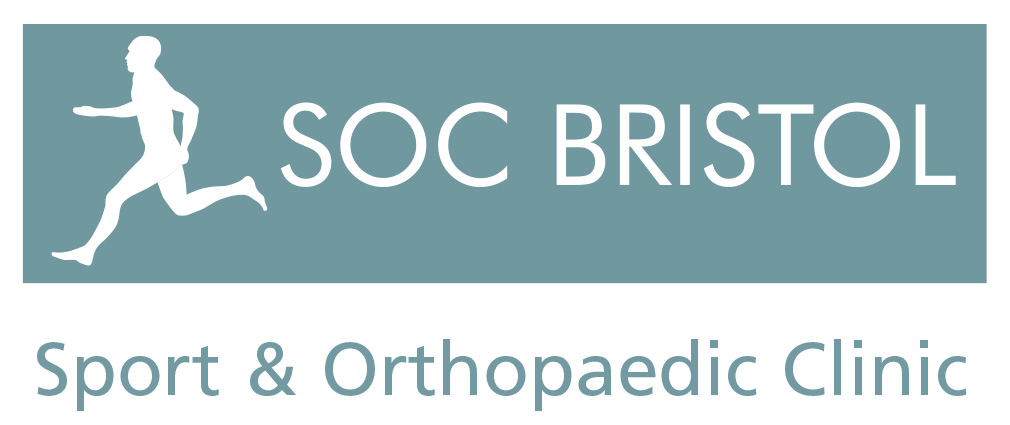Open Bone Stabilisation (Latarjet)
Description:Dislocations of the Shoulder (Gleno-Humeral) Joint are common. During the dislocation structural damage may occur to the joint. This damage may involve damage to the fibrous lip (labrum) of the socket (glenoid) or the bony socket (glenoid) itself. This damage may need to be repaired or reconstructed to stabilise the Gleno-Humeral Joint.
Link to additional information on Shoulder / Glenohumeral joint instability.
The soft tissue damage can usually be repaired or reconstructed as a keyhole (arthroscopic) procedure. The torn labrum is released and secured back to the to the edge of the socket (glenoid) with anchors which are fixed to the bone and to which sutures are attached that allow the labrum to be secured.
If the damage is more extensive with significant loss of bone this void is typically best addressed with a procedure that transfers bone from elsewhere to repair the socket (glenoid). This procedure is typically in the form of a Coracoid transfer or Latarjet procedure although alternative bone grafts can be used. This procedure is most reliably undertaken under direct vision as an open procedure.
The purpose of the surgery:
The aim of the surgery is to stabilise an unstable Gleno-Humeral Joint.
Alternative Treatment options:
Shoulder instability may be managed with rehabilitation to optimise muscle function in an attempt to satisfactorily improve stability. Activities can be modified to avoid those during which the Gleno-Humeral Joint feels unstable.
Anaesthetic:
The surgery is typically undertaken with the patient asleep with a nerve block to provide additional pain relief.
Incision and Dressings:
If there is bone damage then a larger incision is required (open technique) an incision approximately 5cm long is made over the front of the shoulder. This is typically closed with an absorbable suture under the skin. Paper Butterfly Stitches (SteriStripsTM) are usually used and the wound covered with padding and a splash proof OpsiteTM dressing.
Procedure:
The coracoid is exposed and the attachment of the Coraco-Acromial ligament is detached. The Pectoralis Minor (Pec Minor) insertion is released by trimming a portion of bone from the inside surface of the Coracoid. The Conjoint Tendon (Short Head of Biceps and Corachobrachialis), which is the main musculo tendinous attachment of the Coracoid, is preserved. The Subscapularis tendon is split, minimising potential damage to the muscle. The front of the GlenoHumeral Joint capsule (linning of the joint) is exposed and opened. The damaged front of the socket is thereby visible and can be prepared to accept the Coracoid. The Coracoid is turned on its side and fixed to the socket typically with two screws. The capsule and labrum can be repaired, as in a Bankart stabilsiation, keeping the bone block outside the joint.
The coracoid fills the bone defect of the socket as a static stabiliser. The Conjoint tendon then acts as a dynamic stabiliser of the shoulder as it is redirected across the front of the shoulder when it is in its most vulnerable position with arm away from the body with the hand extending backwards as if throwing.
Please select the following link to view the .wmv file version if you do not wish to install QuickTime:
Open Latarjet _PowerPoint
Rehabilitation:
Following the surgery immobilisation is required in a PolyslingTM. The sling should be worn as instructed in the post-operative guidance. The sling is usually worn for 3 weeks day and night and 3 weeks at night. The arm should be exercised as detailed in the post-operative rehabilitation guidelines. This typically involves avoiding movements that stress the repair too soon.
Please see link to post stabilisation rehabilitation guidelines.
Admission and Discharge:
You will normally be admitted the day of surgery and go home the same day. It may be necessary for you to stay in overnight particularly if you do not have a responsible adult to keep an eye on you overnight or if your operation is late on in the day.
Risks associated with the operation:
All operations are associated with a degree of risk but significant complications associated with an open Latarjet stabilisation are uncommon. The following risks are those which are serious or most commonly reported in the literature.
Infection (<1%). Infection in shoulder surgery is uncommon, particularly in keyhole (arthroscopic) surgery. If an infection were to develop it is typically a superficial infection, which can be treated with oral antibiotics. Rarely does an infection develop that requires re-admission to hospital and surgery to wash the infection out.
Anaesthetic Risks (Anaestheic complications are rare but include Heart Attack (Myocardial Infarction, MI), Stroke (Cerbero-Vascular Accident, CVA) and a clot in the leg (Deep Vein Thrombosis, DVT) or lungs (Pulmonary Embolus, PE).
Damage to nerve or blood vessels (Neuro-Vascular Damage) (<1%). Damage to nerves or blood vessels are rare. Damage to the axillary nerve may occur as it passes close to the joint. Damage to this nerve may result in weakness and difficulty bringing the arm out to the side (abduction).
Stiffness. After the surgery and a period of immobilization the shoulder is likely to be stiff. This stiffness should improve with time and graduated rehabilitation. Initial stiffness may be protective of the repair. Rarely persistent stiffness requires treatment.
Recurrence (<5%). The aim of the surgery is to stabilise the shoulder (Gleno-Humeral) Joint. Despite a successful repair or reconstruction there is a small risk of recurrent instability. Typically this follows a further injury.
Further surgery (Re-operation)
Mal-union and Non-union. The operation relies on the Coracoid bone block healing to the bone of the front of the Glenoid (socket). Despite careful preparation and surgical technique there is a risk that the Coracoid will not heal (non-union) or that it will heal in a suboptimal position (mal-union).
Arthritis. While the surgery itself is unlikely to significantly predispose the shoulder to arthritis, a dislocation itself increases the probability of arthritis.

